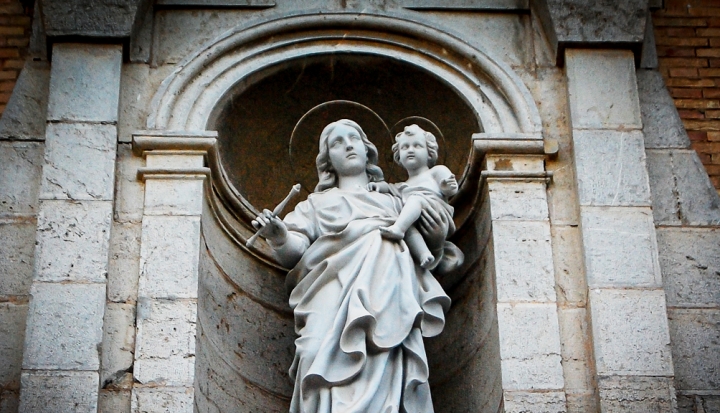In 2005 in Chicago, a young woman was driving home from work and looked at the wall of an underpass where she saw an image of the Virgin Mary. For a short while, “Our Lady of the Underpass” became national news and a local pilgrimage site. Where some saw a miraculous image, however, others saw a mere salt stain.
Although the excitement has died down, there are still those who ensure that the underpass remains adorned with candles, flowers, and a makeshift altar. There are thousands of stories like this. Some Marian shrines become permanent pilgrimage sites, such as Lourdes and Medjugorje. Others simply fade away.
The veneration and adoration of Mary is as old as the church itself. The earliest record of Mary’s veneration probably comes from the Third Ecumenical Council at Ephesus in A.D. 431. There church fathers affirmed Mary as the Theotokos, or God-bearer. The title stuck, and today we refer to her as the “Mother of God.”
This designation of Mary as the mother of God is really at the root of Roman Catholic veneration. Mary is the link between our broken humanity and the boundless divinity present in the triune God. Mary is redeemed, as she is human, but she is also considered to have a special and unique relationship with God, as she shares DNA with Christ. Mother Teresa once remarked, “She gave Jesus his body, and his body is what saved us.”
In the many years since 431, Mary has come to occupy a powerful place in Roman Catholic spirituality. She has many faces and innumerable names, among them Our Lady of Guadalupe, She Who Ripens the Wheat, Queen of Angels, and the Light Cloud of Heavenly Rain. She is said to appear on occasion, mostly to children or others who are weak, disempowered, or on the margins of society. She is said, in some cases, to procure miracles. Some have even said that in the last days, Mary will lead the army of angels in the final battle against evil.
But all of the titles and all of the miracles are considered to be a result of Mary’s close relationship with her son, Jesus. As mother of the King of Kings, she is the saint of saints. Furthermore, because the church is the body of Christ, and Mary is Christ’s mother, she is also the mother of the church. This means that in addition to having a special relationship with Jesus, Mary also has a special relationship with the church. She belongs to the church and the church belongs to her.
So when we pray the rosary, or bow our heads during the creed, we are honoring our mother, and the mother of our Lord. Although she is not God, she has earned our respect and devotion.
This article appeared in the May 2014 issue of U.S. Catholic (Vol. 79, No. 5, page 46).
Have a question you’d like to get answered? Ask us at editors@uscatholic.org!
Image: Flickr photo cc by Archangel12













Add comment